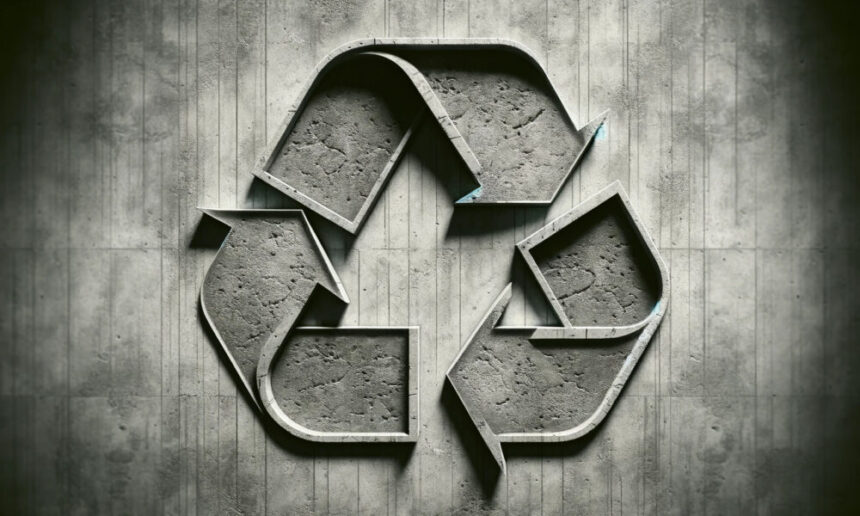By adopting inexperienced practices, they’ll cut back their impression on the surroundings and promote a more healthy planet for future generations.
Going inexperienced not solely advantages the surroundings but additionally affords long-term value financial savings. Sustainable practices can enhance effectivity, cut back operational prices, and improve firm popularity.
As extra purchasers demand eco-friendly buildings, adopting sustainable practices may present a aggressive edge. Listed here are seven actionable steps building corporations can take to turn out to be extra sustainable.
1. Use Sustainable Constructing Supplies
One of many basic steps towards sustainable building is the collection of eco-friendly constructing supplies. Conventional building supplies like concrete and metal have a excessive environmental impression resulting from their energy-intensive manufacturing processes. Switching to sustainable supplies can considerably cut back this impression.
Firstly, think about using recycled supplies corresponding to recycled metal, reclaimed wooden, and bamboo. These supplies not solely cut back the demand for brand new uncooked supplies but additionally divert waste from landfills. For instance, reclaimed wooden can add a novel aesthetic to a constructing whereas preserving pure sources. Bamboo is a quickly renewable useful resource that may be harvested with out inflicting long-term environmental harm.
As well as, go for low-VOC (unstable natural compounds) paints and adhesives. Conventional paints and adhesives launch dangerous chemical compounds into the air, which might have an effect on indoor air high quality and hurt staff’ well being. Low-VOC options are higher for each the surroundings and human well being.
Lastly, sourcing supplies domestically can cut back transportation emissions. Domestically sourced supplies help the native financial system and cut back the carbon footprint related to long-distance transportation.
2. Implement Vitality-Environment friendly Practices
Vitality effectivity is a cornerstone of sustainable building. By lowering vitality consumption, building corporations can decrease their carbon footprint and operational prices.
Investing in energy-efficient equipment and gear is an effective place to begin. Trendy gear typically consists of energy-saving options that cut back energy consumption with out compromising efficiency. For instance, energy-efficient cranes and excavators can considerably decrease gas use on building websites.
Using renewable vitality sources like photo voltaic or wind energy on-site can additional improve vitality effectivity. Photo voltaic panels will be put in on-site workplaces and even built-in into the development course of to energy instruments and equipment. Wind generators can present a supplemental vitality supply, particularly in areas with constant wind patterns.
Incorporating energy-efficient designs into the development course of can be essential. This consists of utilizing correct insulation, high-performance home windows, and energy-efficient lighting methods. Correct insulation reduces the necessity for heating and cooling, whereas high-performance home windows forestall warmth loss within the winter and warmth achieve in the summertime. Vitality-efficient lighting, corresponding to LED lights, makes use of considerably much less electrical energy in comparison with conventional lighting choices.
3. Use Sensible Sensors for Concrete Optimization
Concrete manufacturing is a serious supply of carbon emissions within the building trade. Nonetheless, good know-how might help mitigate this impression. Utilizing good sensors to optimize the concrete combination can cut back the quantity of cement wanted, resulting in decrease emissions.
Sensible sensors monitor the concrete curing course of in real-time, offering information on the optimum mixture of supplies. These sensors modify the combination to realize the required power and sturdiness with much less cement. This not solely reduces the environmental impression but additionally lowers materials prices.
For instance, sensors can detect the precise moisture content material wanted, adjusting water and cement ratios to attenuate waste. This exact management ensures that concrete meets high quality requirements whereas being extra environmentally pleasant.
4. Scale back, Reuse, and Recycle Waste
Waste administration is a essential facet of sustainable building. Development websites generate a major quantity of waste, and implementing waste administration practices might help cut back this burden on the surroundings.
Earlier than beginning a venture, set up a complete waste administration plan. This plan ought to define how waste will probably be dealt with, together with sorting, recycling, and disposal strategies. Assign particular areas on-site for several types of waste, corresponding to steel, concrete, and cardboard.
Recycling supplies is one other efficient technique to handle waste. Metals like metal and aluminum will be recycled a number of instances with out shedding their properties. Concrete will be crushed and reused as mixture for brand new building tasks. Cardboard and different packaging supplies will be recycled into new merchandise.
Reusing supplies from demolition tasks can be useful. As a substitute of sending outdated supplies to landfills, salvage what will be reused. As an example, bricks, tiles, and wooden beams will be repurposed in new constructions. This not solely reduces waste but additionally conserves sources and saves cash.
5. Incorporate Inexperienced Constructing Certifications
Inexperienced constructing certifications, corresponding to LEED (Management in Vitality and Environmental Design) or BREEAM (Constructing Analysis Institution Environmental Evaluation Methodology), set requirements for sustainability in building. Pursuing these certifications can information corporations in implementing inexperienced practices and reaching acknowledged benchmarks.
LEED certification focuses on varied features of sustainable constructing, together with vitality effectivity, water conservation, and lowering emissions. Buildings are rated primarily based on their environmental efficiency, with greater rankings indicating better sustainability. Attaining LEED certification can improve an organization’s popularity, appeal to eco-conscious purchasers, and doubtlessly qualify for monetary incentives.
BREEAM assesses constructing efficiency and environmental impression all through a constructing’s lifecycle, from design to demolition. It covers a variety of standards, together with vitality use, well being and wellbeing, and supplies. BREEAM-certified buildings are acknowledged for his or her excessive requirements of sustainability and may command greater market values.
6. Implement Water Conservation Practices
Water is a crucial useful resource that ought to be conserved, particularly in building, the place water use will be intensive. Implementing water-saving practices can considerably cut back the environmental impression of building tasks.
Utilizing water-efficient fixtures and home equipment on building websites is a simple technique to preserve water. Low-flow taps, bathrooms, and showers can cut back water use with out compromising performance. These fixtures are designed to make use of much less water whereas sustaining the mandatory strain and move charges.
Accumulating and reusing rainwater for non-potable makes use of, corresponding to mud management and irrigation, is one other efficient technique. Rainwater harvesting methods can seize and retailer rainwater, which might then be used for varied on-site actions. This reduces the demand for recent water and might help handle stormwater runoff.
Implementing xeriscaping, which makes use of drought-tolerant crops to attenuate water use, can be useful. Xeriscaping entails deciding on crops that require little to no irrigation as soon as established. This not solely conserves water but additionally creates low-maintenance landscapes that are perfect for building websites.
7. Promote Sustainable Transportation
Transportation is a major supply of emissions within the building trade. Selling sustainable transportation choices might help cut back this impression and contribute to total sustainability objectives.
Encouraging carpooling or using public transportation amongst staff can considerably cut back the variety of autos on the highway. This not solely lowers emissions but additionally decreases visitors congestion round building websites. Offering incentives, corresponding to reserved parking spots for carpoolers or sponsored public transit passes, can encourage staff to decide on these choices.
Investing in electrical or hybrid autos for the corporate fleet is one other efficient technique. These autos produce fewer emissions in comparison with conventional gasoline-powered autos and might help cut back the corporate’s carbon footprint. Moreover, electrical autos will be charged utilizing renewable vitality sources, additional enhancing sustainability efforts.
Utilizing native suppliers to cut back transportation distances and emissions can be essential. Sourcing supplies and companies from close by areas minimizes the environmental impression related to long-distance transportation. This not solely reduces emissions but additionally helps the native financial system and may result in quicker venture completion instances.
The submit Sustainable Development Corporations: 7 Steps to Go Inexperienced appeared first on Vamonde.








